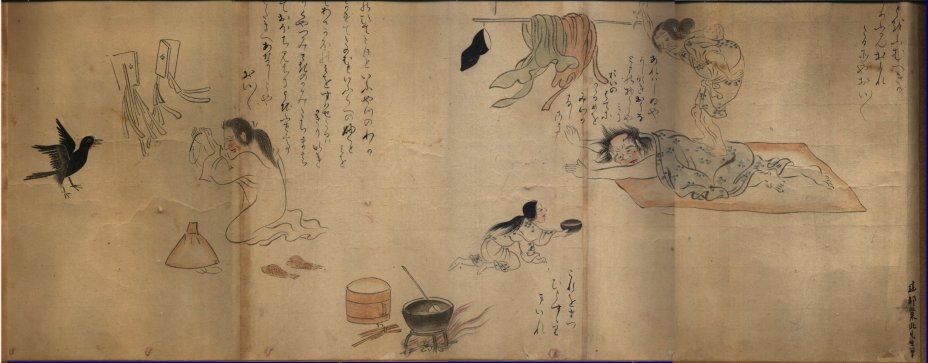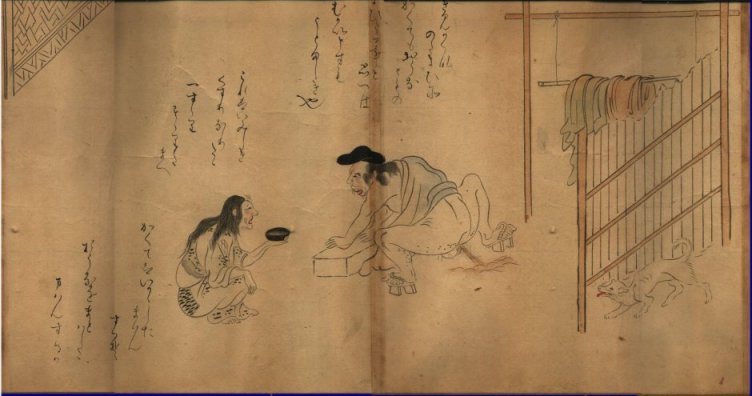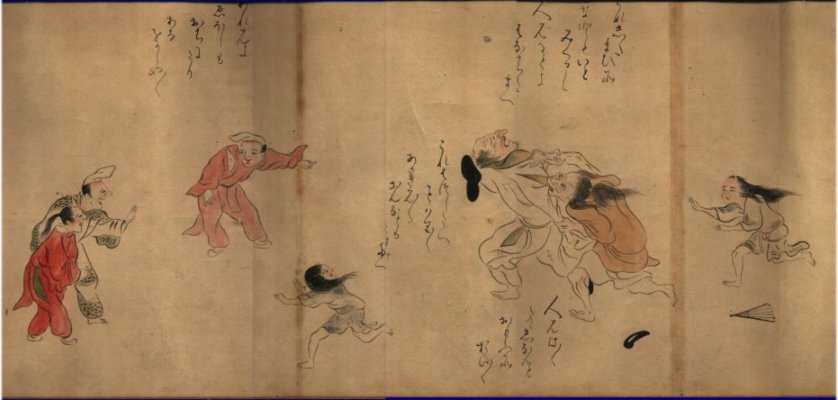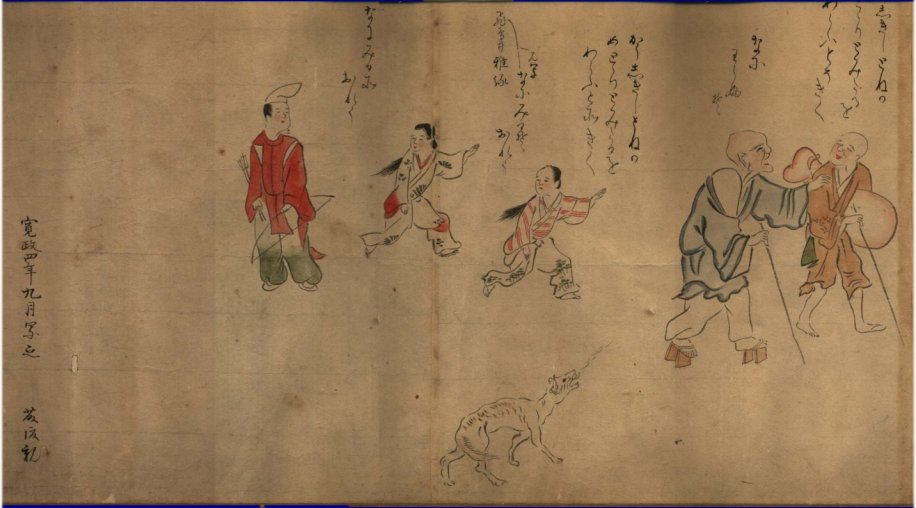

Larger Images by Part 部分放大圖




Hand painted copy of parts 13-19 of the famous 《Fukutomi Zoshi 》by Haiga Master Takebe Socho (1761-1814)
繪卷-江戶時代名俳畫家建部巢兆(1761-1814)仿《福富草紙》繪卷部分
Signed and Dated September, 1792
Size 43 cm X 390 cm
Hand painted copy of parts 13 to 19 of the famous 《Fukutomi Zoshi》 (Tale of Fukutomi; Shunpo-in) by Edo period Haiga Master Takebe (Tatebe) Socho (1761-1814). Haiga is a form of poem painting for visual expression of haiku poetry. Described as an amusing lively artist in Roberts Dictionary of Japanese artists, Tatebe Socho was a haiku poet and a student of the famed Tani Buncho. Few of his works exist.
《Fukutomi Zoshi》, an Important Cultural Property of Japan, is a narrative handscroll of folk tales from the Kamakura Period (1185-1333). Zoshi is a form of painting throught which the artist use pictures and words to display folk tales. The 《Fukutomi Zoshi》 handscroll tells the unrefined yet entertaining story of a poor old man whose greed and gullibility led him to believe that he could turn his flatulence into a profitable performance, only to end up in shame. Measurements: Image: 35.3cm x 1028.8cm, Overall: 37cm x 1067cm
Please click to see the Complete Original 《Fukutomi Zoshi》Handscroll
日本江戶時代名俳畫家建部巢兆(1761-1814)手繪仿《福富草紙》繪卷之第13至19部分,原卷完成於日本南北朝∼室町時代初期(1185-1333), 現收藏於日本春浦院,是日本重要文化財。
建部巢兆(1761-1814)
出生於江戶(今東京),又名建部英親,出於白雄門,與夏目成美、鈴木道彥等並稱為江戶時代三大俳畫家。
大和繪-----《繪卷物》以及《繪草紙》
日本平安時代始於遷都平安京(今京都)的794年,止於平安家滅亡的1185年,延續將近四個世紀,是日本歷史上時間最長的時代。其間於894年廢止了遣唐使,中斷絕中日間官方往來,一度脫離中國文化影響,出現日本本土民族化風潮,整個美術領域都在尋求與以平安京為中心的風土人情相適應的和風表現形式,這時期發展開來的主要繪圖形式稱“ 大和繪 ”。大和繪主要種類是《繪卷物》以及《繪草紙》。
所謂繪卷物是用畫卷表現日本文學作品,是平安時代中內容最豐富、技巧最高、最富民族特色的畫種。
大和繪另外一種重要體裁是《繪草紙》。所謂“ 草紙”是當時流行的筆記小說,以“ 假名”寫成。《繪草紙》則是“ 草紙”的圖解,相當於連環圖。
Click Here to See Other Japanese Paintings
Click Here to See Other Paintings
Click Here to Go Back to Homepage
Attachments : Enlarge Images of the Handscroll




